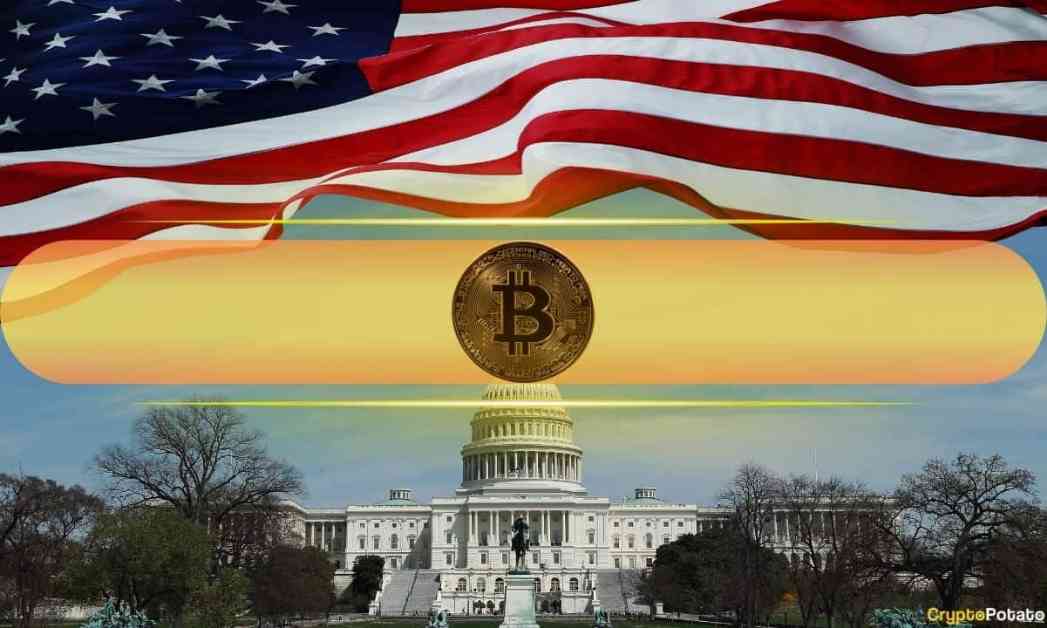The demand for Bitcoin (BTC) in the United States has been on the rise recently, spurred by comments made by Federal Reserve chair Jerome Powell at the Jackson Hole symposium. Despite this surge in interest from U.S. investors, the broader crypto market has not experienced the same level of growth. According to a report from CryptoQuant, while BTC has seen a rally due to increased investor interest in the U.S., overall demand for Bitcoin remains relatively low and has even dipped into negative territory in recent weeks.
Bitcoin Rallies Amid Increased U.S. Demand
The spike in demand for Bitcoin among U.S. investors was evident in the Coinbase Premium, which reached 0.11%, its highest level since July. This metric indicates that the popular U.S.-based trading platform is experiencing higher demand from American investors compared to exchanges located outside the country. CryptoQuant views this as a positive sign that BTC is moving from non-U.S. platforms to Coinbase, a trend typically associated with bull markets and an indication of a potential upward trend in Bitcoin’s price.
Another metric, the Inter-exchange Flow Pulse (IFP), which measures the one-year cumulative sum of BTC net flows between Coinbase and other exchanges, also saw a rally. This suggests that Bitcoin is flowing into the U.S.-based exchange in response to the price premium and increased demand in the U.S. Additionally, demand for Bitcoin in the perpetual futures market saw a boost alongside Open Interest, with OI rising by approximately 10,000 BTC to reach 276,000 BTC. This surge indicates that traders are opening new long positions, with buy orders outnumbering sell orders.
Despite the uptick in Bitcoin demand in the U.S., the price of the cryptocurrency rose by 6%, climbing from $60,000 to $65,000, its highest level since August 2. Interestingly, investors did not engage in significant profit-taking, as realized profits only amounted to $536 million. This figure is significantly lower than the multi-billion dollar profits recorded during previous market tops this year. Furthermore, the Apparent Bitcoin Demand 30-day growth has dropped from 496,000 BTC in early April to a negative 36,000 BTC. Apparent Demand is calculated as the difference between the daily total Bitcoin block subsidy and the daily change in the number of BTC that has not been moved in a year or more. CryptoQuant emphasizes that the crypto market needs to see a substantial increase in apparent Bitcoin demand before prices can fully recover and reach new highs.
Subheadings:
Factors Driving Increased Bitcoin Demand in the U.S.
One of the key factors contributing to the surge in Bitcoin demand in the U.S. is the recent comments made by Federal Reserve chair Jerome Powell. At the Jackson Hole symposium, Powell hinted at a potential tapering of the central bank’s asset purchases, which led to increased interest in Bitcoin as a hedge against inflation and fiat currency devaluation. The uncertainty surrounding traditional financial markets has also driven investors towards alternative assets like Bitcoin, further fueling demand for the cryptocurrency.
Moreover, the growing acceptance and adoption of Bitcoin by mainstream financial institutions and corporations have played a significant role in boosting demand among U.S. investors. Companies like Tesla, MicroStrategy, and Square have all made substantial investments in Bitcoin, signaling to other institutional investors and retail traders that the cryptocurrency has a place in their portfolios. This increased institutional interest has provided a level of legitimacy to Bitcoin, attracting a broader range of investors and driving up demand.
Challenges and Risks Associated with Increasing Bitcoin Demand
While the surge in demand for Bitcoin in the U.S. is a positive development for the cryptocurrency, there are challenges and risks that come with this increased interest. One of the primary concerns is the potential for regulatory crackdowns on cryptocurrencies by government authorities. The U.S. government has expressed a keen interest in regulating the crypto market to prevent illicit activities such as money laundering and tax evasion. Any stringent regulations imposed on Bitcoin could dampen demand and hinder its growth in the U.S.
Another risk associated with the rising demand for Bitcoin is the volatility of the cryptocurrency market. Bitcoin’s price is notoriously volatile, with sharp fluctuations occurring within short periods. This volatility can deter some investors from entering the market, especially those looking for more stable investment options. Moreover, the lack of regulatory oversight and market manipulation in the crypto space can expose investors to significant risks, including fraud and scams.
The Future of Bitcoin Demand in the U.S. and Beyond
Despite the challenges and risks, the future of Bitcoin demand in the U.S. and globally remains promising. The increasing adoption of Bitcoin as a store of value and a medium of exchange by individuals, institutions, and governments indicates a growing acceptance of the cryptocurrency as a legitimate asset class. As more investors recognize the benefits of diversifying their portfolios with Bitcoin, demand for the cryptocurrency is likely to continue rising.
In the U.S., the growing interest in Bitcoin among retail investors, institutional players, and corporate entities suggests that the cryptocurrency has established itself as a mainstream investment option. With regulatory clarity and investor education, Bitcoin demand in the U.S. could reach new heights, driving the price of the cryptocurrency to unprecedented levels. Additionally, the global demand for Bitcoin is expected to grow as more countries recognize the potential of digital assets and integrate them into their financial systems.
In conclusion, the increasing demand for Bitcoin in the U.S. is a positive indicator of the cryptocurrency’s growing popularity and acceptance among investors. While challenges and risks remain, the future looks bright for Bitcoin as it continues to gain traction as a legitimate and viable investment option. As demand for Bitcoin rises, the cryptocurrency market is poised for further growth and expansion, paving the way for a new era of digital finance and decentralized economies.

